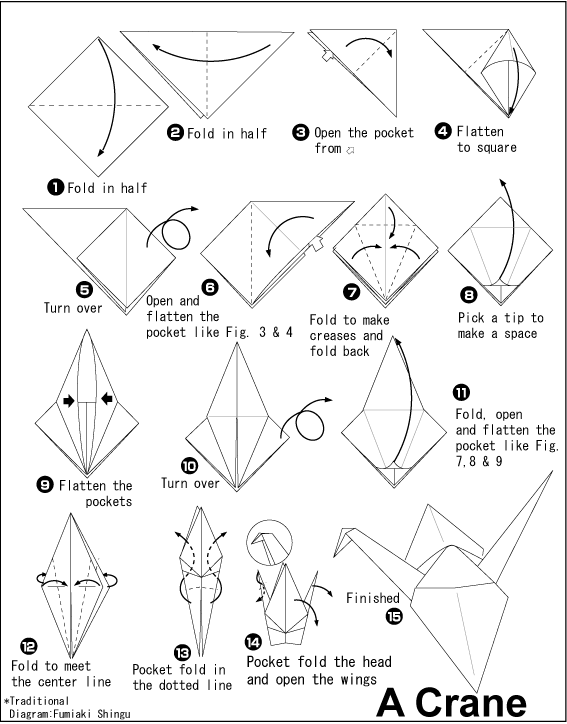
Twelve-year-old Sasaki, who developed leukemia after the atomic bombing of Hiroshima during World War II, started making cranes during her hospitalization. The story of a young Japanese girl named Sadako Sasaki also popularized cranes. While it’s believed it can grant you a wish, some beliefs state senbazuru grants happiness, and eternal good luck.

This number is significant because cranes are thought to live for a thousand years. It’s said that the gods will grant anyone who folds 1000 cranes ("senbazuru" in Japanese) a special wish. And it’s believed to carry souls up to paradise on its wings.Īnother reason for the crane’s popularity is an ancient Japanese legend. This crane appears in Japanese mythology as "Honourable Lord Crane". It borrowed its design from the Japanese red-crowned crane. Its Japanese name is orizuru, which means folded crane. The origami crane is famous both in Japanese culture and around the world. Let’s learn to make an origami crane! History of the Origami Crane
.gif)
Whether you’re new to paper folding or have always wanted to create a paper crane, you’ve come to the right place. And Sadako Sasaki, whose story Eleanor Coerr based a children’s book on. An ancient Japanese legend popularized it. It’s one of the most popular and classic origami models, requiring few materials and little skill. The origami crane has a longstanding reputation in Japanese culture. Making a paper crane is the perfect DIY project for adults, teenagers, and children alike.

Learn to Make an Origami Crane in 4 Phases.Anyone who’s tried their hand at paper folding can tell you it’s easy to learn to make an origami crane.


 0 kommentar(er)
0 kommentar(er)
